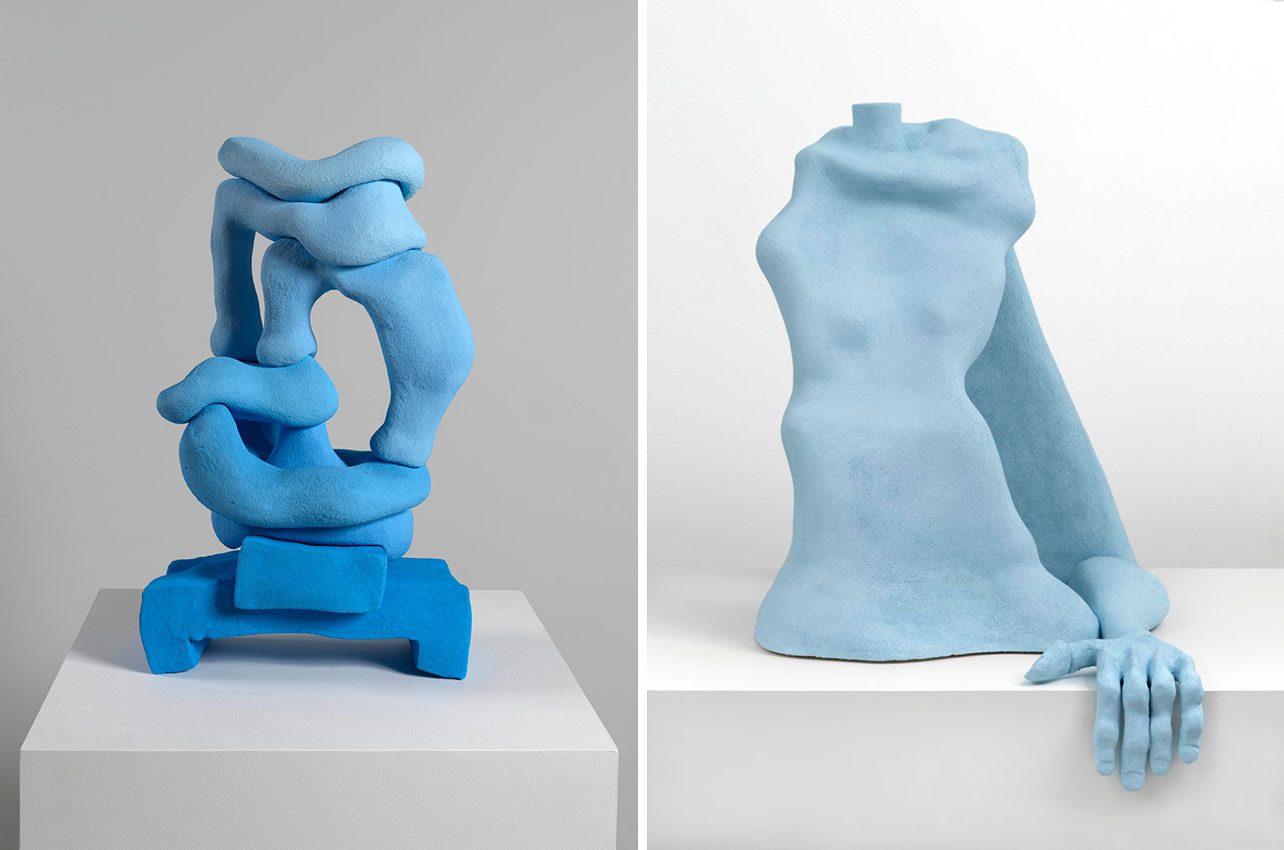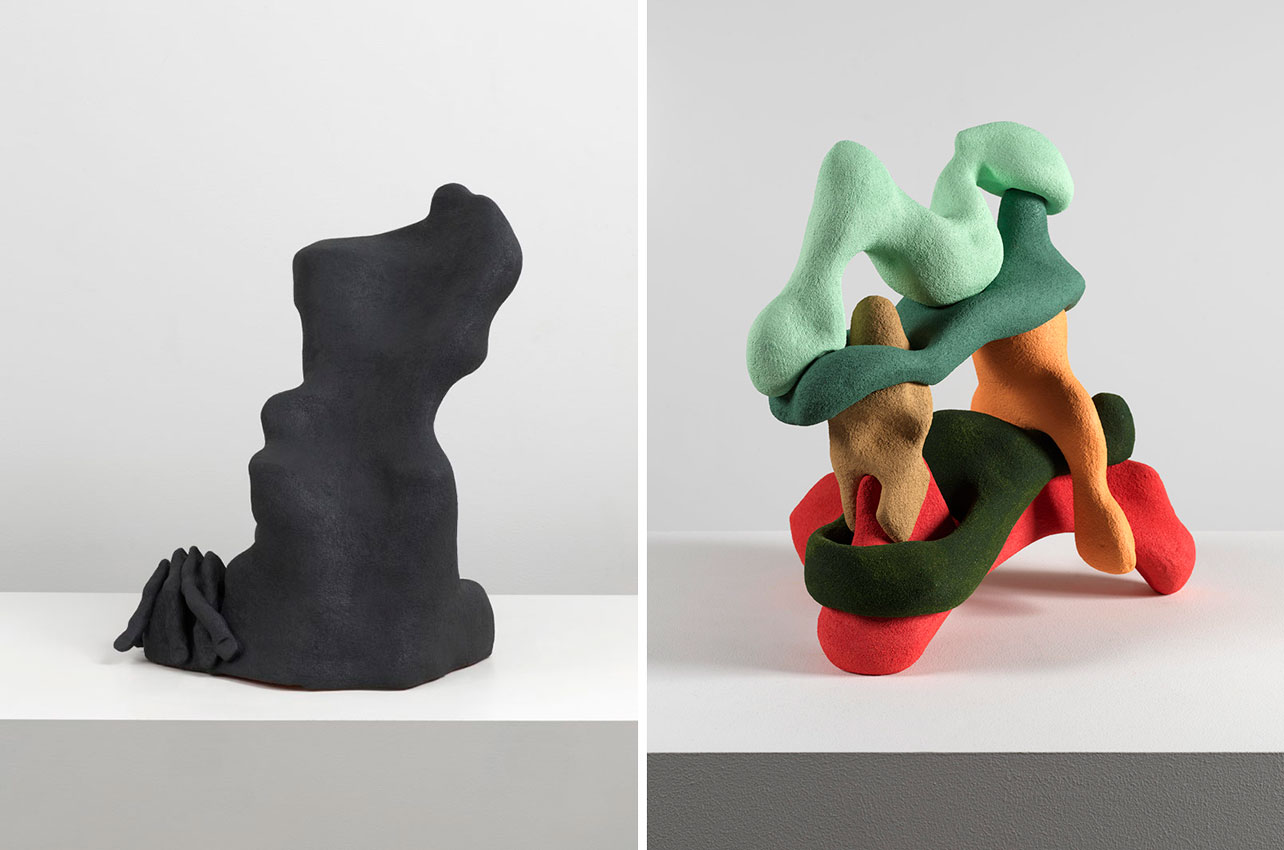ART CITIES:N.York-Jesse Wine
 Jesse Wine has been working with and appropriating ceramics into his expanded sculptural practice since graduating from the Royal College of Art in 2010. Wine has a strong engagement with the process of making, creating works in a rich variety of styles and finishes, ranging from natural earthy glazes to glossy bold primary colours. Making use of traditional glazing and firing techniques he often depicts icons of contemporary life such as Sports Direct mugs, adidas flip-flop sliders and disparate items of clothing.
Jesse Wine has been working with and appropriating ceramics into his expanded sculptural practice since graduating from the Royal College of Art in 2010. Wine has a strong engagement with the process of making, creating works in a rich variety of styles and finishes, ranging from natural earthy glazes to glossy bold primary colours. Making use of traditional glazing and firing techniques he often depicts icons of contemporary life such as Sports Direct mugs, adidas flip-flop sliders and disparate items of clothing.
By Efi Michalarou
Photo: SculptureCenter Archive
Jesse Wine ‘s semi-autobiographical works skillfully appropriate historical high-culture with archetypes of low culture in order to create hybridised humorous works that pose questions about taste and cultural exclusivity. More recently he has begun to further abstract these tropes, creating larger more organic forms. “Imperfect List” is Jesse Wine’s first U.S. solo museum exhibition and continues his open and intuitive approach to sculpture, building upon a fifteen-year engagement with clay as his primary artmaking material. The exhibition brings together a wide variety of works, ranging from larger-than-life, abstracted figures, to segmented, floor-bound works displaying fragments of dexterous limbs and living room furniture, to modernist buildings and a fleet of small trucks. The exhibition’s title, comes from a 1990 spoken-word track by Big Hard Excellent Fish, a short-lived project of British musicians Pete Wylie and Robin Guthrie. In alignment with the song, Wine’s exhibition posits sculpture as a paradoxically over-productive yet ruminative activity where capitalistic desires are cyclically constructed, then run on empty and deformed — but not yet destroyed. Installed across SculptureCenter’s disorienting lower level galleries, Wine’s exhibition stages an anxious relationship between rest and activity. In one work, an angular apartment tower sits on top of a giant, sleeping head. Nearby, two monumental, leggy sculptures casually convene as vehicles pass below. Throughout, limbs and objects that seem to be spent, submissive, or otherwise idle evoke a churning matrix of stifled aspirations: to move from one’s childhood home to the city, to couple up, to reconcile productive efforts with un(re)productive sexuality, to be on call should an opportunity at success arise. Pairings of works in the exhibition pull the viewer back and forth between domestic interiors and domineering public settings, dissolving the human form into and out of the spaces that condition it. Though Wine’s distinctive approach to free-formed ceramic produces suggestive postures and attenuated gestures (count the number of fingers and toes in the exhibition), the work often appears malleable, sometimes even making itself. Wine hides its structure under alluring surfaces coated with admixtures of paint, minerals, and metals that wryly hint at a longer, “timeless” history of sculpture. In a subset of works that resemble or emulate buildings, Wine’s work thematically explores the excessive productive force that gives the city its shape. Together, the works reflect a fluid and anthropomorphic proximity to bombastic construction in the urban landscape, as well as its pragmatic formal deviations. In analogies made between limbs, joints, and architectural features, Wine produces allegories of individuals’ purchase on the space above, below, and around themselves.
Info: Curator: Kyle Dancewicz, SculptureCenter, 44–19 Purves Street, Long Island City, New York, Duration: 24/9/20-25/1/21, Days & Hours: Thu-Mon 11:00-18:00, www.sculpture-center.org







